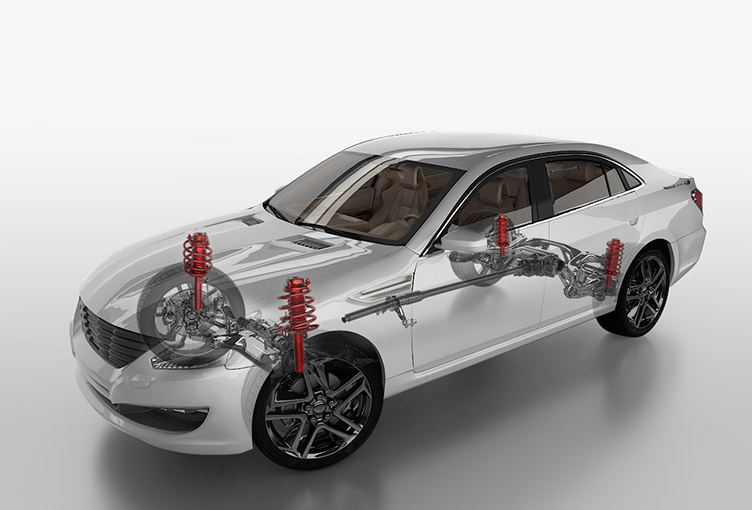
The answer to the question question of when to replace shock absorbers and struts hinges on several variables, including how many miles a vehicle is driven, on what kinds of roads it’s driven, and whether it’s driven gently or with reckless abandon. Your car has a suspension system that provides dampening of shocks and jarring while driving on the road. The suspension also helps improve vehicle handling. There are many different types of suspension systems out there, but the most common by far is a combination of shock absorbers and struts. On older cars, shock absorbers are used on both the front and rear wheels, but modern cars use them primarily on the rear wheels, with strut assemblies on the front.
Both shocks and struts work in a similar way. They use either compressed gas or liquid to help absorb the lateral (up and down) movement of your car caused by bumps, dips, speed bumps, potholes and more. Your shock absorbers are in use any time the car is moving (and even when it’s not). That means they’re subjected to a lot of wear and tear, and they will eventually fail. In fact, they’re considered a normal maintenance item, and they should be replaced relatively regularly. You should also have your shocks and struts inspected at each oil change. In general, a shock absorber should last at least 50,000 miles before you need to have it replaced. However, the real determining factor is where you drive and how you drive. For instance, if you do a lot of off-road driving, or spend a lot of time on dirt roads, your shocks will wear out much more quickly. If you do primarily highway or interstate driving where the roads are smooth and level, they may last well beyond the 50,000-mile mark.
Once your shocks begin to wear, they’ll fail quickly. What happens is that the end seals begin to wear. Eventually, they will fail. The gas or liquid inside the shock absorber will then leak out. In a liquid-based shock, this can be seen as moisture on the top of the shock absorber or running down the side of the assembly. Here are signs to know when to replace your shock absorbers:
1. Longer stopping distance- having worn shock absorbers on your vehicle can increase your stopping distance by up to 20%. As you increase your travelling speed this will also increase the distance it takes your vehicle to completely stop. This 20% extra distance can be enough to cause a fatal incident and should be attended to as soon as possible.
2. Swerving and nose dives- does your car dip or swerve under braking? If so you need to have your shock absorbers checked. If you do dip or swerve under braking it decrease your control over the car which can be very dangerous in wet weather.
3. Vibrations- are you getting vibrations through the steering wheel as you’re driving along? If your shocks are working properly they should keep your tyres in optimal contact with the road and there shouldn’t be any vibrations. If this problem occurs you need to be cautious, at high speeds the vibrations can be more intense and decreasing overall control of the vehicle.
If you think your shocks are in need of attention, you mechanic can help.
